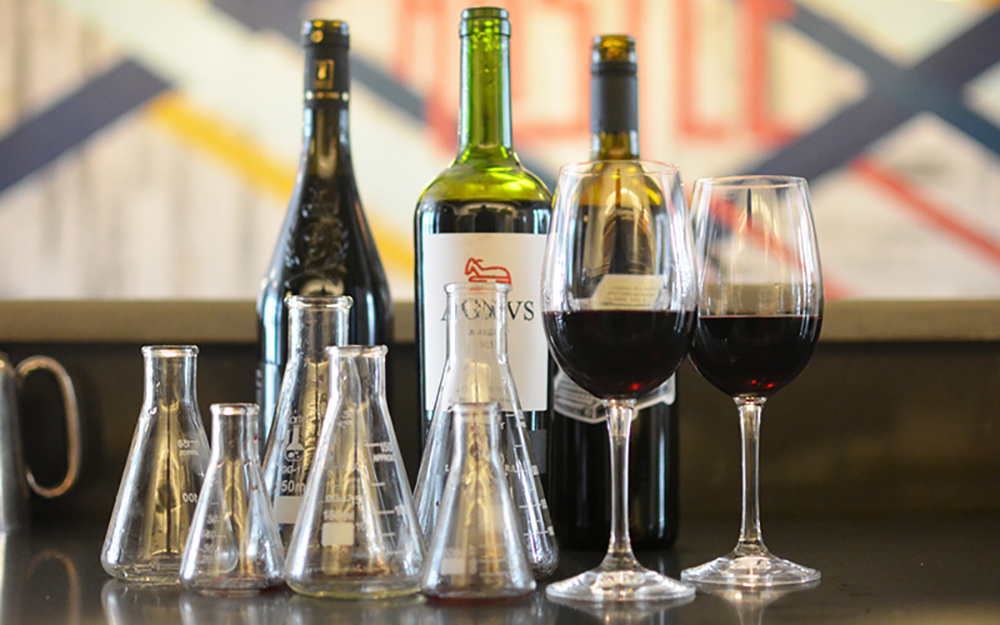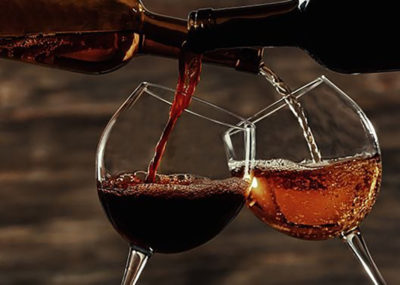
By Rick Riozza
All of my 6 grandchildren, who range from 3 to 19 years of age, have pretty much referred to me in their lifetime as Babbo, an affectionate term for sure. Indeed, they seem to discover or catch-on what my first name really is when they get to around nine or ten.
So—when I finally perfected a home wine red blend to the point where I have my neighbors clamoring for it, well, we had to give the stuff a name. With all the kids around the dinner table hearing and watching us adult folk pontificating, arguing, lobbying, and rolling our eyes about, one of the kids simply said, just call it Babbo’s Blend. Done deal!
We are of the generation where wine making is pretty much one of the coolest jobs ever. Through these past recent decades, I’ve seen countless professionals, artists, retirees, enlightened young folk, millionaires, and billionaires give up their day job and go into the wine making trade.
We’ve all heard it before: You wish to make a million in the wine biz?—start with ten million. Winemaking can be seriously difficult, expensive, time consuming and all consuming! Well—I’ve got some good news for you dreamers: forget the vineyard (although don’t we love lunching and taking life in around the vineyards!) and forget the winery: make your own signature wine by simply blending from existing bottles.
Let’s remember, Wine blending is the process by which you combine different varietal wines into one supreme wine. Probably the most famous blending in history that continues currently is Bordeaux: Cab Sauv, Merlot, Cab Franc, Petite Verdot, Malbec, and may, still, a touch of Carménère. Everyone in and around the Bordeaux region mixes some proportions of those varietals. Just as famous, however, is Burgundy where they especially do not blend: it’s 100% Pinot Noir for Red Burgundy, 100% Chardonnay for White Burgundy.
Most of the time when a winery is making a blend they’ll keep the varietals separate until they reach the bottle. That means that each kind of grape will be grown in different vineyards, fermented apart, and sometimes even aged in different casks. Most of California’s winemakers always blend but name their predominant grape as the name of the wine. For instance when you see a label stating “Napa Valley Cabernet Sauvignon” that means it’s usually made with 85 to 95 percent Cab, and a little something else.
Blending is definitely an art in the professional level; but, there’s no reason you can’t enjoy the process and make your wine your own. It’s experimental and fun and you’re playing with wine.
First off, pick a couple bottles of wines that you like. It’s probably better to use full varietal wine and not a “red blend”–which by name has already been blended with a variety of grape types already. You want these to be good quality wines that you personally enjoy. After all, your blend should be a reflection of you as a wine lover, and your taste is what’s controlling. So grab your wine and a few wine glasses, maybe some beakers or other measuring equipment, and get started.
 Often times in my wine aisle when asked to recommend a bottle, I’ll select one that the customer has not tried and is reasonably priced. Happily, most of the time, they find it to be a winner. The downside here, is that after my recommendations, the wine gets sold out! Good for the store, not-so-good for my own personal consumption. But hey! I’m most satisfied to broaden the wine experience.
Often times in my wine aisle when asked to recommend a bottle, I’ll select one that the customer has not tried and is reasonably priced. Happily, most of the time, they find it to be a winner. The downside here, is that after my recommendations, the wine gets sold out! Good for the store, not-so-good for my own personal consumption. But hey! I’m most satisfied to broaden the wine experience.
So at the risk of perhaps not finding my wines due to you readers jumping onto my recipe and liking it, this is Babbo’s Blend for this year. The two bottles I utilize are Oak Grove Petite Sirah, selling at around $6, and Gato Negro Cabernet Sauvignon (a Chilean organic wine at around $5. This is a great example of working with low budget wines to produce a good quality wine. Quantitatively speaking, it’s like 1+1=3.
Gato Negro, from one of Chile’s largest producers, San Pedro, is one great Cab Sauv find at $5 on the market. It features a bright berry aroma with a hint of herbaceousness and freshly-turned earth that is too rare in cheap wine. The palate is round and soft with vanilla notes but the acid blooms a fine balance with blackberry jam, mint and leather aromas; Dry, light-medium body; a mature dry wine with fruity, moderate finish. It made a score of 85.
The Petite Sirah wine is very fruity in flavor with a very sleek texture; it still has the varietal’s typical firm tannins and hints of black pepper in the generous black-cherry flavors. It’s medium bodied and not too heavy. It spoke to me that it could well be blended with another, more versatile than many. Wine Enthusiast scored it at 86.
Babbo’s Blend owns the best of both wines, with a neighborhood score of 88!
Since there are no real strict rules in the hometown blending game, the fun is on as to the proportions one wishes to select. One can start with a 50/50 mix, and then go on from there adjusting what flavors of the wines you decide to stress. With my particular Babbo’s Blend, I stay reasonably equal but I’ll often stray, depending on my mood, how long the wine’s been out—sometimes one wine has been refrigerated and not the other.
As you can tell, home blending is a blast! Have fun! Cheers!









































